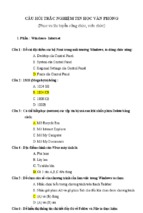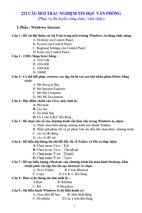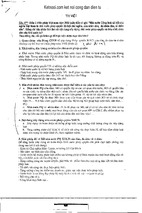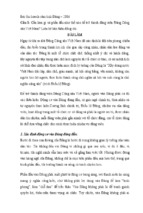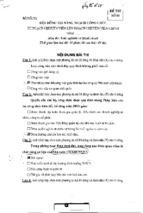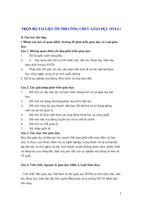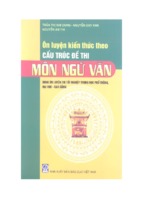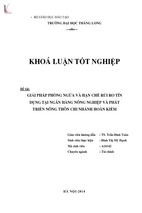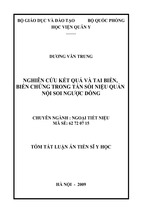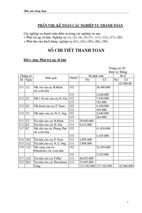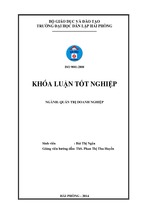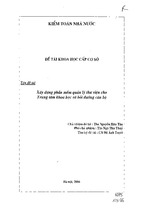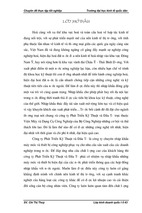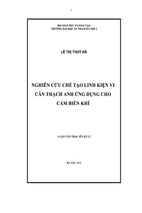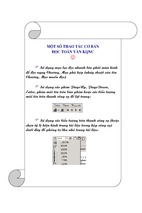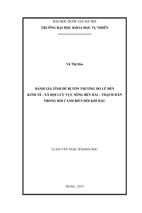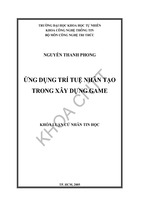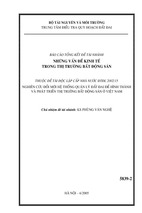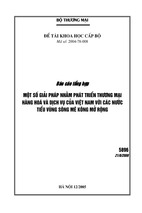FOR the second edition of this book, I have added an extra chapter,
Chapter 14, which updates the treatment, especially of issues in lexical
semantics. The focus on word meanings reflects a personal interest,
but also the belief that a good deal of a person's knowledge of a
language resides, precisely, in the knowledge of words, and of their
properties. I am grateful, as always, to the many individuals who have
encouraged me in my work, including Dirk Geeraerts, Brygida
Rudzka-Ostyn, Savas Tsohatzidis, Rob MacLaury, and especially
Rene Dirven. My intellectual debt to Ronald Langacker will be
apparent throughout. A special word of thanks, also, to my editor at
Oxford University Press, Frances Morphy, who first suggested the
expanded second edition. I regret that, because of my translation to the
other side of the globe, she had to wait a little longer than promised for
the delivery of the additional chapter.
I
PROTOTYPES IN LINGUISTIC THEORY
SECOND EDITION
JOHN R. TAYLOR
LINGUISTIC CATEGORIZATION
LINGUISTIC
CATEGORIZATION
Prototypes in Linguistic Theory
JOHN R. TAYLOR
Second Edition
CLARENDON PRESS • OXFORD
1995
Oxford University Press, Walton Street, Oxford 0x2 6DP
Oxford New York
Athens Auckland Bangkok Bombay Calcutta ('ape Town
Dar n Salaam Delhi Florence I long Kong Istanbul Karachi
Kuala Lumpur Madras Madrid Melbourne Mexico City Nairobi
Paris Singapore Taipei Tokyo Toronto
and associated companies in
Berlin Ibadan
Oxford is a trade mark of Oxford University Press
Published in the United States
by Oxford University Press Inc., Sen1 York
©John R.Taylor 1989, 1995
First published 1989
First published in paperback 1991
Second Edition 1995
All rights reserved. No part of this publication may be reproduced, stored in a
retrieval system, or transmitted, in any form or by any means, without the prior
permission in writing of Oxford University Press. Within the UK, exceptions
are allowed in respect of any fair dealing for the purpose of research or private
study, or criticism or review, as permitted under the Copyright, Designs and
Patents Act, 1988, or in the case of reprographic reproduction in accordance
with the terms of the licences issued by the Copyright Licensing Agency.
Enquiries concerning reproduction outside these terms and in other countries
should be sent to the Rights Department, Oxford University Press, at the
address above.
This book is sold subject to the condition that it shall not, by way of trade or
otherwise, be lent, re-sold, hired out or otherwise circulated without the
publisher's prior consent in any form ofbinding or cover other than that in
which it is published and without a similar condition including this condition
being imposed on the subsequent purchaser
British Library Cataloguing in Publication Data
Data available
Library* of Congress Cataloging in Publication Data
Linguistic categorisation : prototypes in linguistic theory
JohnR. Taylor. - 2nd [enl.f ed.
I. Categorisation (Linguistics) 2. Linguistic analysis
(Linguistics) 3. Cognitive grammar. 4. Semantics. I. Title.
PI28.C37T38
1995 40l\43-dc20
95-19066
ISBN 0-19-870012-1 (Pbk)
ISBN
0-19-870013-X
I
3579108642
Typeset by Joshua Associates Limited, Oxford
Primed in Great Britain on acid-free paper by
Bookcraft (Bath) Ltd., MidsomerNorton
For
GeniaandAry
Preface to the Second Edition
FOR the second edition of this book, I have added an extra chapter,
Chapter 14, which updates the treatment, especially of issues in lexical
semantics. The focus on word meanings reflects a personal interest,
but also the belief that a good deal of a person's knowledge of a
language resides, precisely, in the knowledge of words, and of their
properties. I am grateful, as always, to the many individuals who have
encouraged me in my work, including Dirk Geeraerts, Brygida
Rudzka-Ostyn, Savas Tsohatzidis, Rob MacLaury, and especially
Rene Dirven. My intellectual debt to Ronald Langacker will be
apparent throughout. A special word of thanks, also, to my editor at
Oxford University Press, Frances Morphy, who first suggested the
expanded second edition. I regret that, because of my translation to the
other side of the globe, she had to wait a little longer than promised for
the delivery of the additional chapter.
J.R.T.
Preface to the First Edition
T H E title of this book is intentionally ambiguous. In one of its senses,
'linguistic categorization' refers to the process by which people, in
using language, necessarily categorize the world around them. Whenever we use the word dog to refer to two different animals, or describe
two different colour sensations by the same word, e.g. red, we are
undertaking acts of categorization. Although different, the two entities
are regarded in each case as the same.
Categorization is fundamental to all higher cognitive activity. Yet
the seeing of sameness in difference raises deep philosophical
problems. One extreme position, that of nominalism, claims that sameness is merely a matter of linguistic convention; the range of entities
which may be called dogs, or the set of colours that may be described
as red, have in reality nothing in common but their name. An equally
extreme position is that of realism. Realism claims that categories like
DOG and RED exist independently of language and its users, and that the
words dog and red merely name these pre-existing categories. An
alternative position is conceptualism. Conceptualism postulates that a
word and the range of entities to which it may refer are mediated by a
mental entity, i.e. a concept. It is in virtue of a speaker's knowledge of
the concepts "dog" and "red", i.e. in virtue of his knowledge of the
meanings of the words dog and red, that he is able to categorize
different entities as dogs, different colours as red, and so on. Conceptualism may be given a nominalist or a realist orientation. On the
one hand, we can claim that concepts merely reflect linguistic
convention. The English speaker's concepts "red" and "dog" arise
through his observation of how the words red and dog are conventionally used; once formed, the concepts will govern future
linguistic performance. Alternatively, we might claim that concepts
mirror really existing properties of the world. On this view, our
concepts are not arbitrary creations of language, but constitute part of
our understanding of what the world is 'really' like. This book will take
a course which is intermediate between these two positions, yet strictly
speaking consonant with neither. To the extent that a language is a
conventionalized symbolic system, it is indeed the case that a language
imposes a set of categories on its users. Conventionalized, however,
does not necessarily imply arbitrary. The categories encoded in a
Preface
IX
language are motivated, to varying degrees, by a number of factors—
by actually existing discontinuities in the world, by the manner in
which human beings interact, in a given culture, with the world, and
by general cognitive processes of concept formation. It is precisely the
dialectic of convention and motivation which gives rise to the fact that
the categories encoded in one language do not always stand in a oneto-one correspondence with the categories of another language.
Languages are indeed diverse in this respect; yet the diversity is not
unconstrained.
In the first place, then, this book is about the meanings of linguistic
forms, and the categorization of the world which a knowledge of these
meanings entails. But language itself is also part of the world. In speaking of nouns, verbs, phonemes, and grammatical sentences, linguists
are undertaking acts of categorization. The title of the book is to be
understood in this second, reflexive sense. Just as a botanist is concerned with a botanical categorization of plants, so a linguist undertakes a linguistic categorization of linguistic objects. The second half
of the book, in particular, will address the parallels between linguistic
categorization in this second sense, and the categorization, through
language, of the non-linguistic world. If, as will be argued, categories
of linguistic objects are structured along the same lines as the more
familiar semantic categories, then any insights we may gain into the
categorization of the non-linguistic world may be profitably applied to
the study of language structure itself.
The theoretical background to the study is a set of principles and
assumptions that have recently come to be known as 'cognitive
linguistics'. Cognitive linguistics does not (yet) constitute a theoretical
paradigm which is able to rival, even less to displace, the (still)
dominant generative-transformational approach. The main points of
divergence are, however, clear. Whereas generativists regard knowledge of language as an autonomous component of the mind,
independent, in principle, from other kinds of knowledge and from
other cognitive skills, cognitivists posit an intimate, dialectic relationship between the structure and function of language on the one hand,
and non-linguistic skills and knowledge on the other. Language, being
at once both the creation of human cognition and an instrument in its
service, is thus more likely than not to reflect, in its structure and
functioning, more general cognitive abilities. One of the most
important of these cognitive abilities is precisely the ability to categorize, i.e. to see similarity in diversity. A study of categorization processes
X
Preface
is thus likely to provide valuable insights into the meanings symbolized
by linguistic forms. Furthermore, there is every reason to expect that
the structural categories of language itself will be analogous, in many
ways, to the categories which human beings perceive in the nonlinguistic world around them.
The book owes its inception very largely to a suggestion from Rene
Dirven. I am indebted to Professor Dirven, as well as to Maurice
Aldridge, Brygida Rudzka-Ostyn, Dirk Geeraerts, and Savas Tsohatzidis for commenting on earlier versions of the manuscript. That the
manuscript could be completed at all is due, in no small measure, to the
constant encouragement, support, patience, and love, of my wife.
J. R. T
Contents
Typographical Conventions
1. The Categorization of Colour
1.1
1.2
1.3
1.4
Why colour terms?
Arbitrariness
An alternative approach: focal colours
Autonomous linguistics vs. cognitive linguistics
2. The Classical Approach to Categorization
2.1 Aristotle
2.2 The classical approach in linguistics: phonology
2.3 The classical approach in semantics
3. Prototype Categories: I
xv
1
2
5
8
16
21
22
24
29
38
3.1 Wittgenstein
3.2 Prototypes: an alternative to the classical theory
3.3 Basic level terms
38
40
46
3.4 Why prototype categories?
3.5 A note on fuzziness
3.6 Some applications
51
54
55
4. Prototype Categories: II
59
4.1 Prototypes
59
4.2 Prototypes and schemas
4.3 Folk categories and expert categories
65
68
4.4 Hedges
75
5. Linguistic and Encyclopaedic Knowledge
81
5.1 Domains and schemas
83
5.2 Frames and scripts
5.3 Perspectivization
87
90
Contents
Xll
5.4 Frames and scripts in language comprehension
5.5 Fake
5.6 Real
6. Polysemy and Meaning Chains
6.1
6.2
6.3
6.4
Monosemous and polysemous categories
An illustration: Climb
Over
Some problems
7. Category Extension: Metonymy and Metaphor
7.1 Metonymy
7.2 Metaphor
8. Polysemous Categories in Morphology and Syntax
8.1 The diminutive
8.2 The past tense
8.3 A note on yes-no questions
9. Polysemous Categories in Intonation
9.1 The problem of intonational meaning
9.2 The meanings of falling and rising tones
9.3 High key
10. Grammatical Categories
10.1 Words, affixes, and clitics
10.2 Grammatical categories
10.3 The semantic basis of grammatical categories
11. Syntactic Constructions as Prototype Categories
11.1
11.2
11.3
11.4
91
92
95
99
99
105
109
116
122
122
130
142
144
149
154
158
158
160
168
173
175
183
190
197
Constructions
198
The possessive genitive
202
The transitive construction
206
The transitive construction: more marginal members 210
Contents
xiii
11.5 Metaphorical extension of syntactic constructions
215
11.6 A comparison with German
11.7 Concluding remarks
218
220
12. Prototype Categories in Phonology
222
12.1 Phoneme categories
223
12.2 The gradience of phoneme categories
230
12.3 The syllable as a construction
234
13. The Acquisition of Categories
239
13.1 Hypothesized acquisition routes
240
13.2 Grammatical categories
13.3 Conceptual development
13.4 Word meanings
243
247
252
14. Recent Developments (1995)
14.1
14.2
14.3
14.4
14.5
Overview of prototypicality
Prototypes and basic level terms
Polysemy and the two-level approach
Two illustrations: in and round
Polysemy and the network model
14.6 The historical perspective
14.7 Epilogue: on zebras and quaggas
257
258
261
264
271
281
290
294
References
297
Index
311
Typographical conventions
Linguistic forms are printed in italics: dog.
Meanings of linguistic forms, and glosses of foreign language forms,
are given between double quotes: "dog".
Citations are marked by single quotes.
Names of categories are printed in small capitals: DOG.
Phonetic and semantic features are printed in small capitals enclosed
in square brackets: [VOCALIC], [ANIMAL].
Semantic attributes are printed in normal type enclosed in square
brackets: [ability to fly].
Phonemes, and phonemic transcriptions, are enclosed in slashes,
phonetic symbols and phonetic transcriptions are enclosed in square
brackets.
An asterisk * indicates that a following linguistic expression is
unacceptable, on either semantic or syntactic grounds. Expressions of
questionable acceptability are preceded by a question mark.
1
The Categorization of Colour
As pointed out in the Preface, linguistics is concerned with categorization on two levels. In the first place, linguists need categories in
order to describe the object of investigation. In this, linguists proceed
just like practitioners of any other discipline. The noises that people
make are categorized as linguistic or non-linguistic; linguistic noises
are categorized as instances of a particular language, or of a dialect of
a particular language; sentences are categorized as grammatical or
ungrammatical; words are categorized as nouns and verbs; sound
segments arc classified as vowels or consonants, stops or fricatives,
and so on.
But linguists are (or should be) concerned with categorization at
another level. The things that linguists study—words, morphemes,
syntactic structures, etc.—not only constitute categories in themselves,
they also stand for categories. The phonetic form [jed] can not only be
categorized as, variously, an English word, an adjective, a syllable with
a consonant-vowel-consonant structure; [jed) also designates a range
of physically and perceptually distinct properties of the real world
(more precisely, a range of distinct visual sensations caused by the
real-world properties), and assigns this range of properties to the
category RED. The morphosyntactic category PAST TENSE (usually)
categorizes states of affairs with respect to their anteriority to the
moment of speaking; the preposition on (in some of its senses)
categorizes the relationship between entities as one of contact, and so
on.
Both in its methodology and in its substance, then, linguistics is
intimately concerned with categorization. The point has been made by
Labov (1973: 342): 'If linguistics can be said to be any one thing it is
the study of categories: that is, the study of how language translates
meaning into sound through the categorization of reality into discrete
units and sets of units.' Questions like: Do categories have any basis in
the real world, or are they merely constructs of the human mind?
What is their internal structure? How are categories learnt? How do
people go about assigning entities to a category? What kinds of
2
77ie Categorization of Colour
relationships exist amongst categories? must inevitably be of vital
importance to linguists. Labov, in the passage just referred to, goes on
to point out that categorization 'is such a fundamental and obvious
part of linguistic activity that the properties of categories are
normally assumed rather than studied'. In recent years, however,
research in the cognitive sciences, especially cognitive psychology, has
forced linguists to make explicit, and in some cases to rethink, their
assumptions. In this first chapter, I will introduce some of the issues
involved, taking as my cue the linguistic categorization of colour.
1.1 Why colour terms?
There are good reasons for starting with colour terms. In many
respects colour terminology provides an ideal testing ground for
theories of categorization. It is commonly asserted—by linguists,
anthropologists, and others—that categories have neither a real-world
nor a perceptual base. Reality is merely a diffuse continuum, and our
categorization of it is ultimately a matter of convention, i.e. of learning.
This view was expressed very clearly by the anthropologist, Edmund
Leach:
I postulate that the physical and social environment of a young child is
perceived as a continuum. It docs not contain any intrinsically separate
'things'. The child, in due course, is taught to impose upon this environment a
kind of discriminating grid which serves to distinguish the world as being
composed of a large number of separate things, each labelled with a name. This
world is a representation of our language categories, not vice versa. Because
my mother tongue is English, it seems self evident that bushes and trees are
different kinds of things. I would not think this unless I had been taught that it
was the case. (Leach 1964: 34)
According to Leach, the categories that we perceive in the world are
not objectively there. Rather, they have been forced upon us by the
categories encoded in the language that we happen to have been
brought up with. If categorization is language dependent, as Leach
and many others suggest, it is only to be expected that different
languages will encode different categorizations, none of them intrinsically any better founded, or more 'correct', than any other.
Intuitively, we would probably want to reject, on common-sense
grounds, the idea that all categories are merely learnt cultural
artefacts, the product of our language, with no objective basis in
- Xem thêm -

